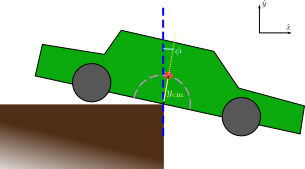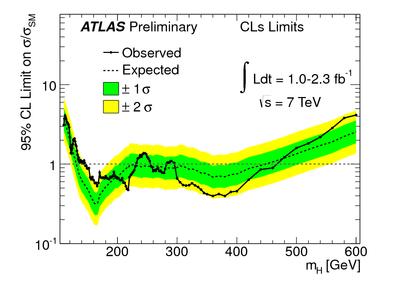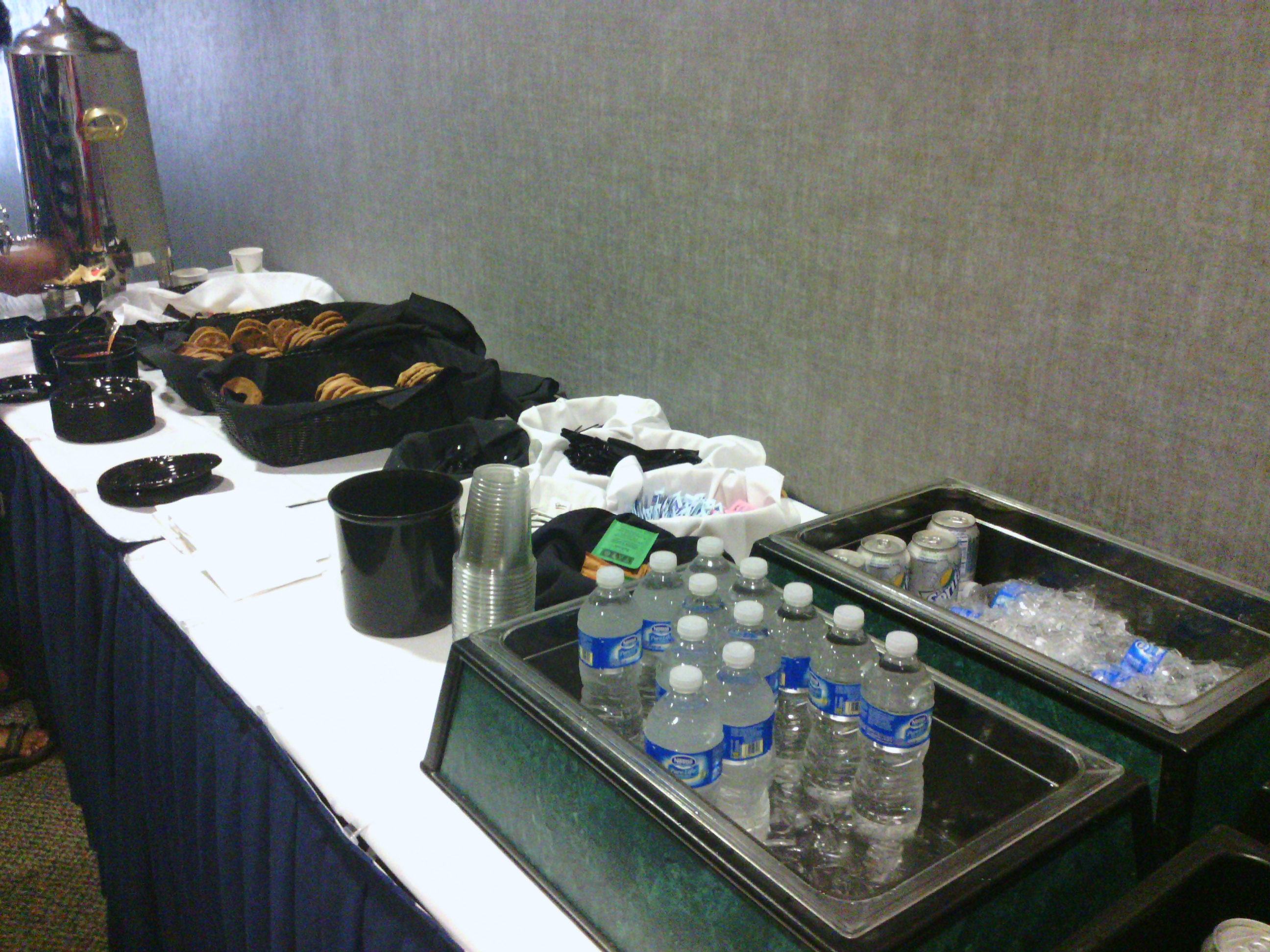Last month I posted about the then-current results from the ATLAS and CMS detectors at the LHC hinting at a possible new particle around \(\unit{120-150}{\giga\electronvolt}\). But in light of new data presented at the 2011 Lepton-Photon conference in Mumbai, we’re not so sure about it anymore.
Take a look at these plots from the ATLAS and CMS experiments, respectively:
The solid line in each plot represents the observed data, and the dotted line represents the expected background, which is basically the theoretical prediction based only on the stuff we already know to exist. The yellow band shows the \(2\sigma\) confidence interval. In other words, if there is nothing left to discover within this energy range (in particular if the standard model Higgs does not exist), there’s a 95% chance that experimental data falls within the yellow band.
When I displayed the equivalent plots from EPS HEP-2011 in my post last month, I pointed out that the interesting features were a couple of small regions where the solid line rose above the yellow band. Looking at the newer plots, you can see that that’s no longer the case. The experimental results are starting to …



